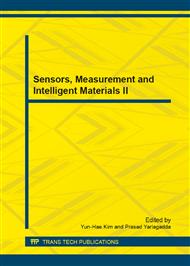[1]
Z. Hasan, et al., Green Cellular Networks: A Survey, Some Research Issues and Challenges, IEEE Communications Surveys & Tutorials, vol. 13, pp.524-540, (2011).
DOI: 10.1109/surv.2011.092311.00031
Google Scholar
[2]
The Climate Group, SMART2020: Enabling the low carbon economy in the information age, (2008).
Google Scholar
[3]
Cisco, Cisco visual networking index: Global mobile data traffic forecast update, 20102015, Whitepaper, (2011).
Google Scholar
[4]
J. Andrews, H. Claussen, M. Dohler, S. Rangan, and M. Reed, Femtocells: Past, present, and future, To appear, IEEE Journal on Sel. Areas in Comm, (2012).
DOI: 10.1109/jsac.2012.120401
Google Scholar
[5]
A. Alkandari and M. Ahmad, Interference management in femtocells, Journal of Advanced Computer Science and Technology Research, vol. 2, no. 1, (2012).
Google Scholar
[6]
V. Chandrasekhar, J. Andrews, and A. Gatherer, Femtocell networks: a survey, Communications Magazine, IEEE, vol. 46, no. 9, p.59–67, (2008).
DOI: 10.1109/mcom.2008.4623708
Google Scholar
[7]
Ashraf, Imran, Lester TW Ho, and Holger Claussen. Improving energy efficiency of femtocell base stations via user activity detection., Wireless Communications and Networking Conference (WCNC), 2010 IEEE. IEEE, (2010).
DOI: 10.1109/wcnc.2010.5506757
Google Scholar
[8]
Xie, Renchao, F. Richard Yu, and Hong Ji. Energy-efficient spectrum sharing and power allocation in cognitive radio femtocell networks., INFOCOM, 2012 Proceedings IEEE. IEEE, (2012).
DOI: 10.1109/infcom.2012.6195537
Google Scholar
[9]
Deutsche Telekom AG, Network and telecom equipment-energy and performance assessment test procedure and measurement methodology, ECR initiative, Germany, Tech. Rep., (2008).
Google Scholar
[10]
G. Scutari, D. Palomar, F. Facchinei, and J. Pang, Convex optimization, game theory, and variational inequality theory, Signal Processing Magazine, IEEE, vol. 27, no. 3, p.35–49, (2010).
DOI: 10.1109/msp.2010.936021
Google Scholar
[11]
E. Access, Further advancements for e-utra physical layer aspects (release 9), (2010).
Google Scholar
[12]
M. Arslan, J. Yoon, K. Sundaresan, S. Krishnamurthy, and S. Banerjee, Fermi: a femtocell resource management system forinterference mitigation in ofdma networks, in Proceedings of the 17th annual international conference on Mobile computing and networking. ACM, 2011, p.25.
DOI: 10.1145/2030613.2030617
Google Scholar


